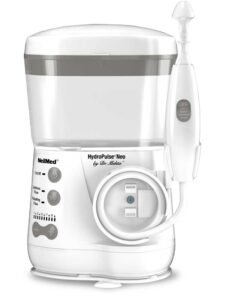Why You Should Stop Snoring Part Six
What is a sleep study?
When a patient has a history of snoring, periods of not breathing, chocking or gasping for air during sleep, restlessness in sleep – excessive tossing and turning, and excessive daytime sleepiness, the sleep study is recommended for accurate diagnosis, and as an aid to therapy. This is a test for Obstructive Sleep Apnea, OSA, when the brain and heart don’t get proper oxygen due to obstruction of the airway.
In OSA, you see excessive daytime fatigue. Daytime fatigue is a cause of traffic and industrial accidents. Obesity, hypertension, certain kinds of heart and lung conditions may be a sign of OSA. In Australia, someone who has had two traffic accidents is required to take the sleep study to see if they have OSA – obstructive sleep apnea.
The sleep study, called polysomnography (poly –many, somno –sleep, grapy –writing) is ordered in order to evaluate the extent to which oxygen fails to get to the brain and heart.
There are stages of sleep:
Stages of sleep are defined as Non-Rapid Eye Movement stage, or NREM, and Rapid Eye Movement or REM. You start to fall asleep in NREM. The brain wave rhythm slows, there is reduced muscle activity and breathing slows. Heart rate slows. Here you might get an answer to your question with a slightly loud voice. As the sleep deepens, heart rate is reduced, and it takes a louder voice to get an answer. There is a third stage of NREM sleep where heart rate slows and brain waves slow too, and muscles are fully relaxed. . Next, sleep goes to REM sleep.
In REM sleep, you have rapid eye movements. This is where you have active dreaming. The brain waves are actually similar to those in the awake state. Skeletal muscle tone is significantly diminished; here is where the soft palate and the tongue can fall back and block breathing. You may get cardiac arrhythmia here, because air is blocked, as when persons die in their sleep.
It is fortunate that skeletal muscle tone is lowered because some of the dreams may be quite active and otherwise the partner might get hurt.
In the sleep study, recordings are made of
• brain waves
• eye movements
• chin movements
• leg movements
• heart EKG
• nasal air passage
• blood oxygen
• chest movements
• abdominal movements
These measurements help determine if the snoring is significant, or social snoring. The episodes of apnea, or non-breathing of more than ten seconds, are counted and compared to the oxygen levels, as well as their effect on the brain and heart.
A significant result of years of sleep studies is that we recognize a condition called Upper Airway Resistance Syndrome (UARS) where there is daytime fatigue and snoring but not enough apnea episodes to be defined as OSA. Here the tongue or soft palate may fall back to obstruct and cause the deep sleep person to “wake up” in order to get the tongue back up. If these episodes, called arousals continue to interfere with good sleep, you get the symptoms of OSA, even though the sleep study is negative. Some of the symptoms associated with Upper Airway Resistance Syndrome include insomnia, headaches, TMJD, GERD and others.
These are the patients to actively treat with pulsing sinus and throat irrigation and strengthening the throat muscles in order to prevent progression to obstructive sleep apnea, OSA.

